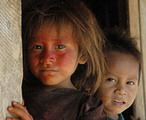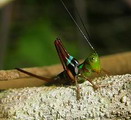 秘魯境內的亞馬遜雨林是地球上最原始、最具有生物多樣性的雨林之一,現在面臨了史無前例的石油和天然氣探勘風潮 。
秘魯境內的亞馬遜雨林是地球上最原始、最具有生物多樣性的雨林之一,現在面臨了史無前例的石油和天然氣探勘風潮 。
秘魯近期釋出2008年新競標的8個亞馬遜新石油區,根據「拯救美洲森林組織(Save America's Forests)」的分析,在秘魯廣大亞馬遜區的石油天然氣開發區已高達64個。
華盛頓「拯救美洲森林組織」的生態學家菲奈(Dr. Matt Finer)博士表示:「石油天然氣開發區現已經覆蓋了75%的秘魯境內亞馬遜雨林區,相當於超過1億2千3百萬公頃的極多樣性雨林,面積大約是加州和緬因州的總和。」由國有石油公司 秘魯石油公司(Perupetro)拍賣的這些石油區的探勘和開採執照,現在慢慢蠶食至原住民領土與保護區的範圍之內。
「現在的石油開發區涵蓋了20個保護區」秘魯非政府組織Derecho, Ambiente y Recursos Naturales的主席蓋伯瓦(Cesar Gamboa)表示:「13個保護區在石油區設立之前就成立了,而石油區設立在保護區之中卻是非法的,因為沒有保護區法( Protected Areas Law)中需要的環境影響評估。」
「幾乎所有的石油區都可稱為原住民居住區,除此之外,許多的石油保護區還包含了原住民自治隔離區。」秘魯原住民組織AIDESEP副主席瓦司逵司(Robert Guimaráes Vasquez)表示。
「拯救美洲森林組織」的分析報告指出,64個石油區中共有58個覆蓋在原住民居住區上,而有15個是位於原住民自治隔離區之中。」
這些刻意自我隔離於外界的原住民,主要是因為他們缺乏對外來疾病的免疫能力,而非常脆弱。
 秘魯政府於2003年減低了投資礦區的使用費,導致了一波新的探勘風潮。
秘魯政府於2003年減低了投資礦區的使用費,導致了一波新的探勘風潮。
超過20家的國際石油公司,包括巴西、哥倫比亞、愛爾蘭及韓國,現在於秘魯進行探測工作,在64個位於秘魯亞馬遜的石油區中,48個是由跨國公司與政府簽訂的合約所生效,僅有8個是於2004年進行簽約,而其他16個石油區有可能於2008年到2009年進行簽約。
然而公民社會組織在2008年的競標結束之後有一些新的正面消息。
三個自治隔離區於2007年的競標中沒有被任何公司選中,而且在2008年,所幸並沒有如預料地進入今年的競標單中。
Survival International的主管科瑞(Stephen Corry)表示:「秘魯石油公司的決定不管從法律以及人道的角度來說都是正確的選擇,我們希望這個決定會是長長久久的。」
4月時,秘魯法庭駁回了3家公司和秘魯政府。將於世界上最後未被發現的部落群進行開發石油案之上訴。
 這件案例被AIDESEP所歸檔引用,AIDESEP一直在找類似的案例以禁止石油公司在秘魯亞馬遜區未開發的部落群開採。石油公司和秘魯政府不斷根據技術性的層面將此案上訴,但是法官已駁回了這些論點,最終判決於近期內宣判。
這件案例被AIDESEP所歸檔引用,AIDESEP一直在找類似的案例以禁止石油公司在秘魯亞馬遜區未開發的部落群開採。石油公司和秘魯政府不斷根據技術性的層面將此案上訴,但是法官已駁回了這些論點,最終判決於近期內宣判。
「亞馬遜區植物、鳥類、兩棲類和哺乳類的生物多樣性在秘魯和厄瓜多爾境內最為豐富,」杜克大學的珍克斯博士(Clinton Jenkins)說道,「這是世界上生物和族群最多樣性的區域,而石油開發則是亞馬遜目前最大的威脅。」
The Peruvian Amazon, a region that holds some of the most pristine and biodiverse rainforests on Earth, continues to face an unprecedented wave of new oil and gas exploration.
Peru recently released eight new Amazon oil blocks as part of its 2008 bidding round. According to analysis by Save America's Forests, that brings the total to 64 oil and gas blocks in Peru's vast Amazon region.
Oil and gas blocks now blanket nearly 75 percent of the Peruvian Amazon," said Dr. Matt Finer, staff ecologist at Save America's Forests in Washington, DC, who is now in Peru. "That is over 123 million acres of megadiverse rainforest, roughly the size of California and Maine combined." These blocks are auctioned by the state oil company Perupetro as license contracts for the exploration and exploitation of hydrocarbons. They now sprawl across both protected areas and indigenous territories.
"Hydrocarbon blocks now overlap 20 protected areas," said Cesar Gamboa, president of the Peruvian nongovernmental organization Derecho, Ambiente y Recursos Naturales. "Thirteen of these protected areas preceded creation of the oil blocks and the overlap is illegal due to the lack of compatibility studies required in the Protected Areas Law," Gamboa said.
"Virtually all of the blocks overlap titled indigenous peoples lands," said Robert Guimaráes Vasquez, vice president of the Peruvian indigenous organization AIDESEP. "Moreover, many of the blocks overlap the territories of indigenous peoples in voluntary isolation."
An analysis by Save America's Forests indicates that 58 of the 64 blocks overlay titled indigenous lands and 15 overlap the territories of indigenous peoples in voluntary isolation.
These isolated peoples, so named due to their deliberate avoidance of the outside world, are extremely vulnerable because they lack resistance or immunity from outsiders' diseases.
The Peruvian government, in 2003, reduced royalties to promote investment, sparking a new exploration boom.
More than 20 international oil companies, from Brazil and Colombia to Ireland and Korea, now operate in Peru. Of the 64 oil and gas blocks that now cover the Peruvian Amazon, 48 are active with signed contracts between the government and multinational companies. All but eight of the contracts have been signed since 2004. The 16 other blocks are likely to have contracts in 2008 or 2009.
Civil society organizations, however, had some positive news after the 2008 bidding round.
Three separate areas that are home to indigenous peoples in voluntary isolation and were part of last year's bidding round but not selected by any companies, did not return as part of the 2008 bidding round as feared.
Survival International Director Stephen Corry said, "Perupetro's decision is the right one - from both a legal and humanitarian point of view - and we hope this change of heart is permanent."
In April, a judge in Peru dismissed the arguments of three companies and the Peruvian government in a court case involving some of the world's last uncontacted tribes and oil exploration.
The case was filed by AIDESEP, which was seeking an order to ban oil companies from working in regions of the Peruvian Amazon inhabited by uncontacted tribes. The companies and the Peruvian government attempted to have the case thrown out of court on various technical points, but the judge has rejected their arguments. A final ruling is expected shortly.
"Amazonian diversity for plants, birds, amphibians, and mammals all peak at its upper reaches in Peru and Ecuador," said Dr. Clinton Jenkins of Duke University. "This is one of the most diverse areas in the world, both biologically and ethnically," Dr. Jenkins says. "Oil development is the major threat to this part of the Amazon."
全文及圖片詳見:ENS



